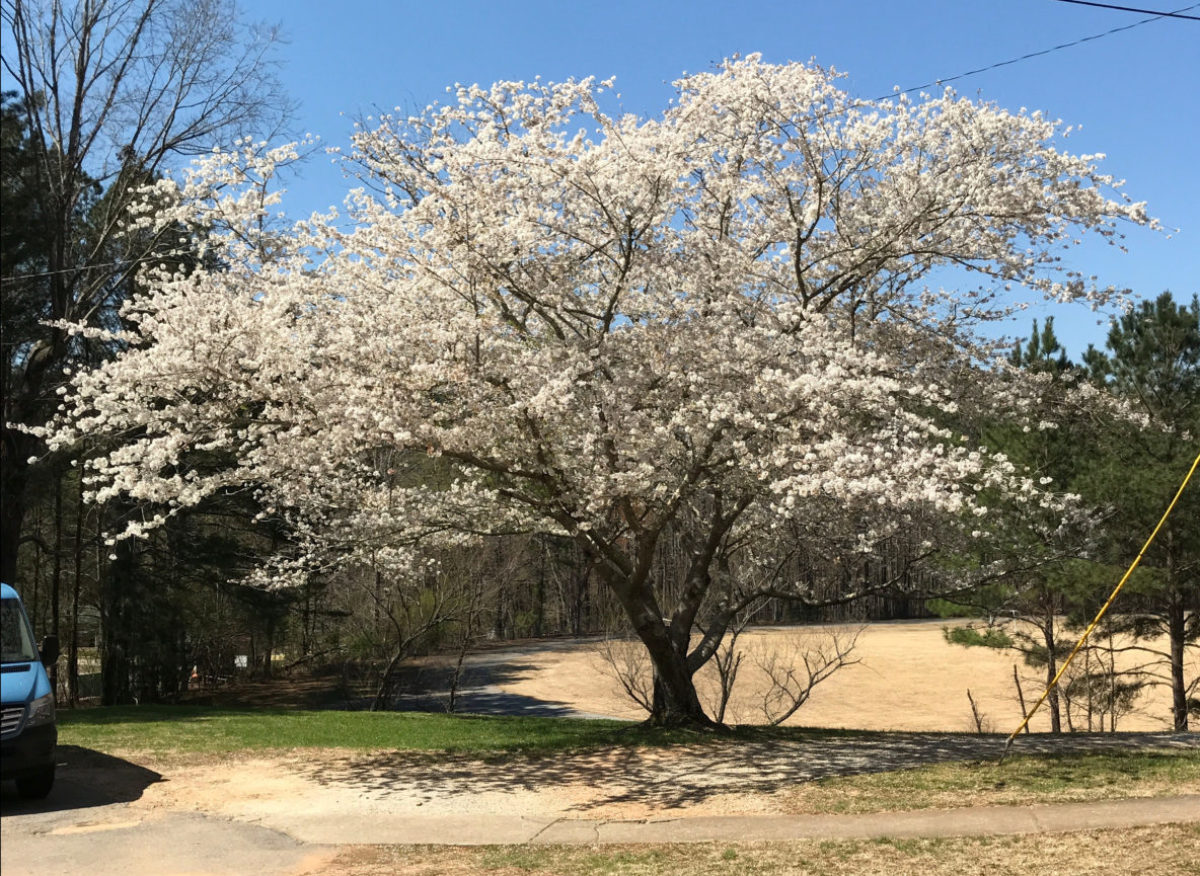 There are trees at YV Inner Harbour that I have always considered odd. They have long limbs that terminate in umbrella- like clusters of long leaves. In the spring a large flower appears above each cluster that is pretty. The trees appear tropical, quite unlike other trees in the area. I finally identified these trees as the umbrella magnolia, or Magnolia tripetala. Another name for this tree is elkwood, so named because the bare branches remind some of elk antlers. The common names are very appropriate, but the species name is a mistake. Tripetala means three petals in latin, but the three parts referred to are not flower petals but actually sepals, which surround and protect the buds.
There are trees at YV Inner Harbour that I have always considered odd. They have long limbs that terminate in umbrella- like clusters of long leaves. In the spring a large flower appears above each cluster that is pretty. The trees appear tropical, quite unlike other trees in the area. I finally identified these trees as the umbrella magnolia, or Magnolia tripetala. Another name for this tree is elkwood, so named because the bare branches remind some of elk antlers. The common names are very appropriate, but the species name is a mistake. Tripetala means three petals in latin, but the three parts referred to are not flower petals but actually sepals, which surround and protect the buds.
The umbrella magnolia is a fast-growing small tree that grows 15 to 30 or more feet tall. It has smooth, gray bark and few branches. The wood is soft and weak and of little commercial value. Fast growing  suckers rise from the base of the main trunk. The leaves are alternate (not paired) and clustered in a whorl at branch and sucker tips. They are 1 to 2 feet long, 6 to 10 inches wide, and are widest three quarters of the way out the leaf. Leaves are tapered at the base and attached to 1 inch stalks. Leaves are lime green on top and a more pale green underneath. In fall they turn brown and drop quickly at first frost.
suckers rise from the base of the main trunk. The leaves are alternate (not paired) and clustered in a whorl at branch and sucker tips. They are 1 to 2 feet long, 6 to 10 inches wide, and are widest three quarters of the way out the leaf. Leaves are tapered at the base and attached to 1 inch stalks. Leaves are lime green on top and a more pale green underneath. In fall they turn brown and drop quickly at first frost.
The umbrella magnolia’s flower blooms after the leaves open in spring, sitting on top of the leaf whorl. The flower is bowl-shaped appearing much like the southern magnolia, has 6 to 9 petals and 3 sepals, and has both male and female parts present. The flowers are pale yellow to cream colored. They are pleasantly fragrant at a distance but have a disagreeable odor up close. They are pollinated by insects. The fruit appears very similar to that of the southern magnolia. It is a 4 to 6 inch long cone-like structure with spirally arranged seeds.  This structure turns whitish green to green and red and then brown, ripening in early fall. The seeds are red, and are scattered by birds.
This structure turns whitish green to green and red and then brown, ripening in early fall. The seeds are red, and are scattered by birds.
The umbrella magnolia is found in scattered areas of the southeastern and south central United States, particularly in the Appalachian Mountains. It is an attractive ornamental, but is not often found in cultivation because the large leaves are easily damaged by wind, the flowers have an unpleasant odor, and it tolerates full sun only if the soil is kept moist. This is an unusual tree and one to watch for in wooded areas.



I did not get the picture, sorry. If the leaves measure what I said on the website and features match, I’d say it is. If leaves are larger and do not have wedge-shaped bases, no it it not, it would be bigleaf magnolia.
I did not get the picture, sorry. If the leaves measure what I said on the website and features match with leaf bases wedge-shaped, I’d say it is. If leaves are larger and have different shaped bases, it is most probably a big leaf magnolia. Both are beautiful trees, and not so often seen.
IMG_6763.JPG
Maybe you can help me discover the name of the tree included here (hope it opens for you). Saw it in Centennial Park, TN. Is it an elkwood magnolia?